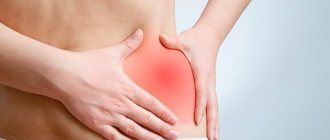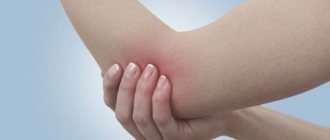Mild, moderate or severe pain in the lower abdomen in women, the causes of which can be different, is a very common complaint received from numerous patients - both very young and elderly. In some cases, although these are unpleasant, they are normal variants that do not indicate any pathologies. But, often they are one of the symptoms of a large list of diseases. First of all, gynecological health is under suspicion, although pain can also arise for other reasons. In any case, you need the help of specialists who will identify the source of the painful condition.
Types of lower abdominal pain
The nature of the pain may vary:
- pulling;
- pricking;
- aching;
- cramping;
- bursting;
- blunt;
- cutting;
- encircling;
- burning, as if burning from the inside.
Unpleasant sensations can begin abruptly and intensely, increase gradually, disturb the right, left or middle, radiate to the lower back and other areas. It can last for several minutes or days, stop intermittently or be constant.
The causes of lower abdominal pain in women can be divided into several main categories:
- physiological, caused by changes in the body;
- gynecological diseases;
- problems in the urinary system;
- disorders of the functioning of the intestines and diseases of the digestive system;
- other pathologies and conditions.
In choosing specific research methods and making the correct diagnosis, clarifying the nature, duration, and intensity of pain is of great importance. By studying the symptoms, doctors can assume a certain disease and outline the necessary direction in examining the patient.
Which doctor should I contact for pain in my left side?
If you experience pain in your left side, you should contact a competent specialist. The first thing you should do is make an appointment with a gastroenterologist, since abdominal pain is the specialty of this specialist. After the examination, the doctor may redirect you to another specialist - a cardiologist, neurologist, surgeon or nephrologist, if it turns out that you do not have a gastrointestinal disease.
Doctors from a variety of specializations are seen at medical clinics in Moscow. In the center’s laboratory, you can donate blood and have an ultrasound scan as prescribed by a doctor, so as not to waste time in queues and find out the results of the examination as quickly as possible. We maintain affordable prices for specialist appointments and procedures necessary for examining the body.
Make an appointment by calling +7 (495) 021-98-73 or leave a request on the website, and our administrators will make an appointment for you.
Do not ignore pain, seek help in a timely manner to prevent possible complications.
Lower abdominal pain in women: physiological causes
In this case, pain is associated with physiological changes occurring in the body. They can occur at different stages of the menstrual cycle, early pregnancy, and be observed during hormonal changes (including during menopause).
Soon after fertilization, a woman may feel a nagging pain. This is due to the introduction of the egg into the endometrium of the uterus, the integrity of which is disrupted. As the fetus grows, the internal organs shift, which sometimes provokes severe discomfort.
Many girls experience severe pain during ovulation in the lower abdomen, the causes of which are hidden in changes in hormonal levels resulting from the rupture of the follicle and the release of the egg. They are often accompanied by other symptoms:
Before menstruation, pain is also a frequent companion for many women. If the patient has been examined, no pathologies have been identified, and unpleasant sensations do not interfere with her normal lifestyle, then such manifestations fit within the boundaries of the norm. When the pain is intense and provokes a serious deterioration in the general condition, dysmenorrhea (algomenorrhea) is usually diagnosed.
Pain during pregnancy
Pregnancy is a period during which it is important for the patient to pay special attention to her health and the reactions of her body. Painful symptoms at this time may be an indicator of pathological processes that pose a threat to the health and life of the fetus and mother, or may be a natural reaction of the body to changes. Its reasons are given in the table below:
| Etiology | Character, what is accompanied by |
| Uterine tone | Pain in the lower abdomen in the early stages of pregnancy is not uncommon in the process of adaptation of the uterine tissues and ligaments to the increase in the size of the organ. If there are no other clinical manifestations, they do not require treatment; however, if present, they can signal a threat of miscarriage. |
| Increased load on the uterine ligaments, calcium deficiency | Painful symptoms during the 2nd and 3rd trimesters of pregnancy, which go away when the pregnant woman relaxes or changes her body position. |
| Placental abruption during pregnancy or during childbirth, and not after it | Vivid pain, accompanied by bleeding or occurring without it against the background of bloating, weakness and dizziness in a pregnant woman. |
| False contractions | Pain of a cramping nature, accompanied by tension of the uterine organ, depending on the situation, can be regarded as a normal phenomenon, or it can signal a threat of miscarriage. |
Pathologies of the reproductive system
There are many causes of pain associated with gynecological problems. Among the most common:
- Endometritis. It is characterized by inflammation of the endometrium, which can occur acutely or chronically. Often accompanied by menstrual irregularities, spotting, uterine bleeding, and nagging pain.
- Adnexitis. Inflammation of the uterine appendages is one of the most common diseases in gynecological practice. In addition to painful sensations (can be in one side or spread to the entire lower abdomen), patients are faced with signs of intoxication and fever. The disease is caused by bacteria, viruses or fungi.
- Endometriosis. In this disease, the cells of the uterus grow and end up outside the uterus. Accompanied by pain during urination, defecation, sexual intercourse and simply with sudden movements, heavy bleeding during menstruation. Regardless of the cycle, brownish discharge is observed.
- Uterine fibroids, which are usually characterized by dull pain in the pelvic area. Cysts and other benign, as well as malignant formations can cause discomfort of varying intensity and spasms.
- Spikes. They may be the result of inflammation in the genital organs, varicose veins and other diseases. Complications during pregnancy. This may include spontaneous abortion, placental abruption and other pathologies. In such cases, the pain is sudden and sharp, accompanied by bleeding from the genitals.
Separately, it is worth focusing on sexually transmitted infections - mycoplasmosis, gonorrhea, chlamydia, trichomoniasis and other diseases. They affect the reproductive organs, causing pain, profuse vaginal discharge of a pathogenic nature, burning, itching and are fraught with complications if left untreated.
Diagnostics
Diagnosing the causes of a feeling of heaviness inside the abdomen and pain can sometimes be quite difficult, since pain can appear due to various diseases. To determine the cause of pain, it is extremely important to initially identify the disease that led to such pain. To do this, you need to make an initial appointment with a gynecologist. The doctor, based on the results of an in-person examination, will make initial assumptions about a possible diagnosis and prescribe the necessary diagnostic and laboratory tests.
Diagnostics includes:
- In-person examination by a specialized specialist (history collection);
- Gynecological examination;
- Ultrasound of the pelvic organs (a study that can help detect dysfunction of the reproductive system organs);
- MRI of the uterus (a research method to determine the presence of tumors);
- Colposcopy (examination of the surface of the cervix using a colposcope).
Laboratory tests include:
- Flora smear;
- Cytological examination of a cervical smear;
- Femoflor (to exclude sexually transmitted infections);
- General blood analysis;
- General urine analysis;
- Blood chemistry;
- Blood test for HIV, hepatitis, syphilis.
Pain in the uterus can be a manifestation of various diseases, therefore, first of all, it is necessary to identify the underlying disease, and only then begin treatment. The treatment plan is selected for each patient by a gynecologist individually, depending on the nature of the pain, the primary disease and the condition of the body. The FSCC FMBA has developed a special comprehensive program for checking women's health. The program will help to identify hidden pathologies that cause pain and assess the condition of the woman’s reproductive system.
Pain on the right and left
In some cases, patients complain of pain in a specific location. Pain in the lower abdomen may occur in a woman on the right due to right-sided inflammatory lesions of the uterine appendages (adnexitis, salpingoophoritis), ileal spasm, tumor formations. Also in this place is the cecum, which has a vermiform appendix - the appendix. If it becomes inflamed, appendicitis develops and the patient needs emergency care.
The most common causes of pain in the left lower abdomen in women are secondary inflammation of the appendages, spasm of the sigmoid colon, tumor process, and ulcerative colitis. Sometimes the problem may be associated with disorders in the joints of the spine and their tissues, a herniated disc, or radiculitis.
Disturbances in the functioning of the urinary system
Cystitis is one of the most common causes of aching pain in women. The bladder can become inflamed after simple hypothermia. Pain when urinating, false and frequent urges are characteristic symptoms of this disease. Other frequently diagnosed pathologies of the urinary system include pyelonephritis and urethritis, in which case discomfort occurs not only in the lower abdomen, but also in the back (especially in the lumbar region).
If pain is dull in nature and occurs in the area above the pubis, bladder polyps can be assumed.
Characteristics of diseases
According to statistics, the occurrence of pain in the lower left side of the peritoneum occurs due to the following diseases:
- urological – from 65 to 90%;
- gynecological – from 60 to 70%;
- gastroenterological – from 50 to 60%;
- orthopedic – from 7 to 15%.
In most cases, the localization of pain in this area indicates pathology:
- spleen;
- small intestine;
- large intestine (left part of the transverse colon and descending branch of the colon);
- organs of the genitourinary system;
- pelvic bones of the skeleton, hip joint, blood vessels, cartilage, nerves, lymph nodes of the pelvic girdle.
Let us dwell in more detail on the symptoms of possible diseases of the listed organs and tissues of the human body.
Digestive problems
Pain in the lower abdomen may also occur due to problems with the intestines or existing diseases of different parts of the digestive system:
- Poisoning from low-quality food contaminated with bacteria. For example, with shigellosis, eschirichiosis and other infections, the pain is paroxysmal and pronounced.
- Hernias of inguinal, Spigelian and white lines. When they are pinched, acute painful sensations occur in the abdominal cavity.
- Pancreatitis. When the pancreas is inflamed, the left side of the lower abdomen and chest hurts, and jaundice may occur.
- Intestinal colic. Characterized by spasm of the large or small intestine. It can be the result of helminthic infestation, food poisoning, or severe stress.
- Cholecystitis. When the flow of bile is disrupted, the risk of developing gallbladder inflammation is high. In this case, the pain spreads to the right side, shoulder or shoulder blade.
If pain occurs accompanied by diarrhea or constipation, changes in the color of stool, the appearance of blood or mucus in the stool, bloating, nausea, vomiting, frequent bowel movements, chills or fever, the cause of such symptoms may be a disorder of the digestive function, organ diseases Gastrointestinal tract.
Discomfort in the navel area
Discomfort may be a symptom of the following pathologies.
- Inflammation of the appendix. If the condition is accompanied by fever, nausea and loose stools, you should immediately consult a doctor.
- Stomach ulcer or gastritis. The pain is burning in nature, accompanied by belching, indigestion, nausea and vomiting. If there is blood in the vomit or the stool is black, this indicates internal bleeding and requires urgent medical attention.
Other causes of pain
There are many other problems that can cause lower abdominal pain. These include:
- injuries to the abdominal cavity and genital organs;
- prolapse of the vagina and uterus;
- varicose veins of the pelvis;
- torsion of the tumor stalk, etc.
Also, women who tend to overreact to stressful situations, often worry and experience anxiety, suffer from psychogenic pain much more often than others.
The multidisciplinary medical center of the Central Clinical Hospital of the Russian Academy of Sciences has experienced and highly qualified specialists who regularly undergo training in the world's leading clinics, modern diagnostic and treatment resources, and equipment from well-known manufacturers. All this makes it possible to provide comprehensive medical care to patients with problems of varying degrees of complexity.










